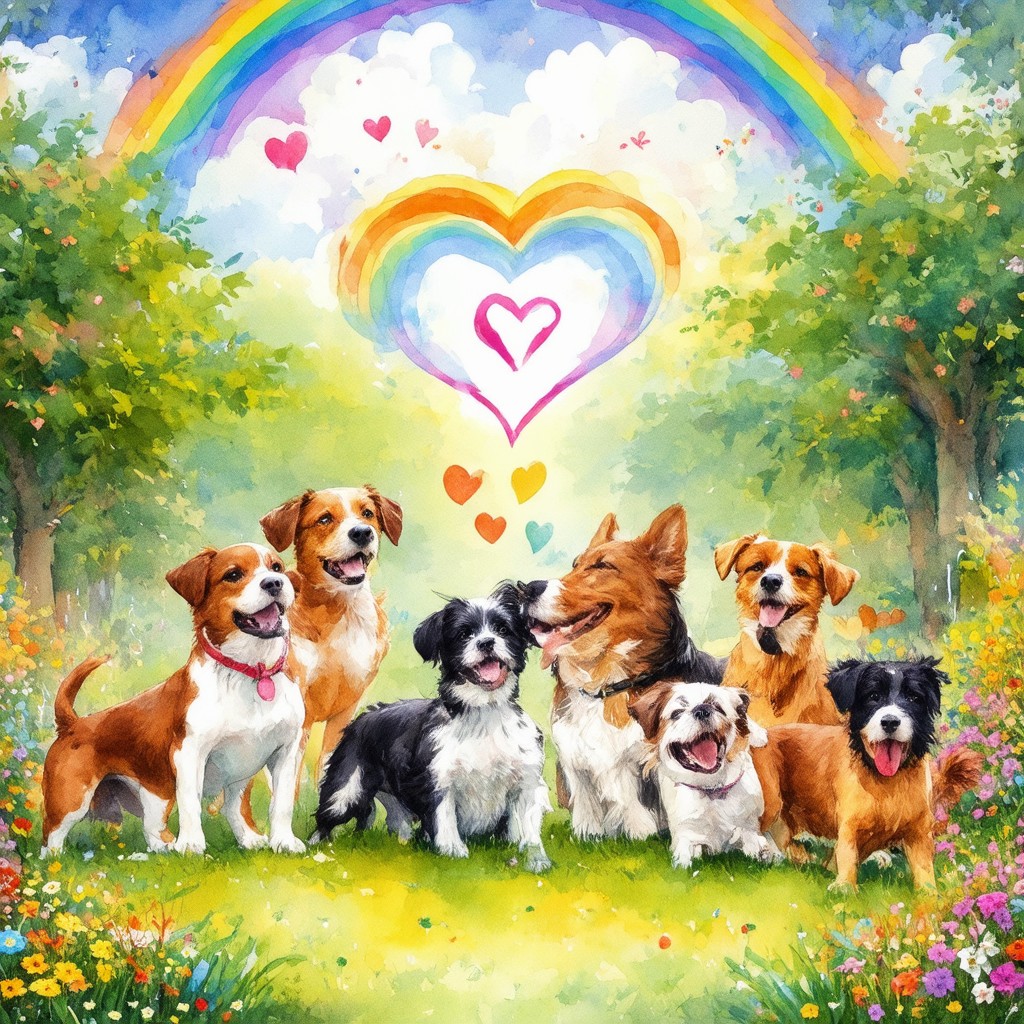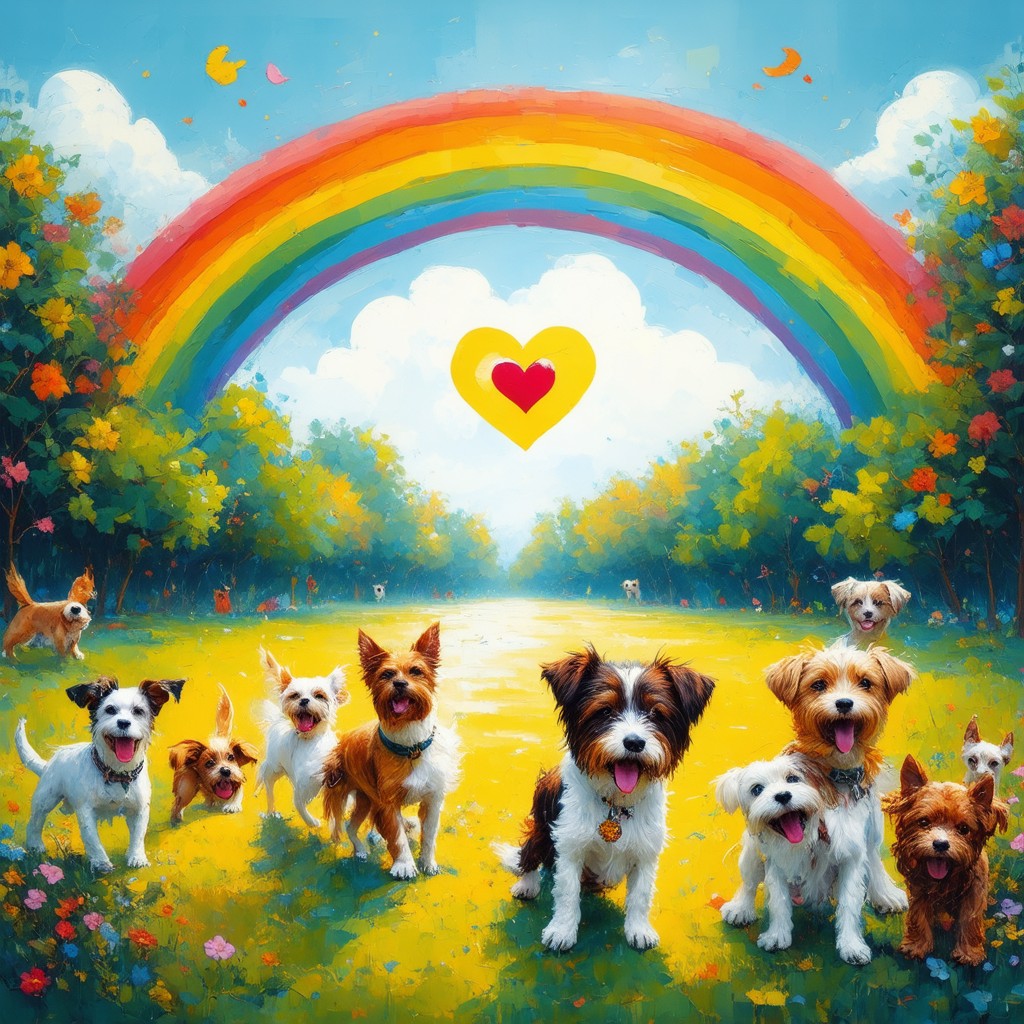Key Takeaways
- Mutt dogs are mixed-breed canines that often enjoy better health and longer lifespans due to genetic diversity.
- Adopting a mutt not only provides a loving home but also helps reduce the number of homeless animals.
- Many mutts are characterized by their unique physical traits and balanced temperaments, making them adaptable companions.
- Factors such as diet, exercise, and regular veterinary care significantly influence a mutt dog’s overall health and longevity.
- Identifying a mutt involves recognizing diverse physical and behavioral traits, and DNA testing can provide insight into their breed composition.
Welcome to our comprehensive guide on mutt dogs, where we delve into the fascinating world of this beloved canine category. In this article, we will explore the definition of a mutt dog, uncover their unique characteristics, and address common misconceptions surrounding the mutt dog breed. Have you ever wondered if mutt dogs live longer than purebreds? We’ll provide insights into their lifespan and the factors that influence it. Additionally, we’ll clarify whether breeds like Pitbulls fall under the mutt umbrella and discuss their behavioral traits, including the question, are mutt dogs aggressive? For those considering bringing a furry friend into their home, we’ll guide you on how to identify a mutt dog and where to find mutt dogs for adoption. Finally, we’ll touch on essential care tips, including mutt dog food and budgeting for their needs. Join us as we unravel the truth behind the mutt dog myth and celebrate the joy these mixed-breed companions bring to our lives!
Understanding the Mutt Dog Breed
Mutt Dog Definition
A mutt dog, often referred to as a mixed-breed dog, is an animal that has ancestry from two or more different dog breeds. This genetic diversity can lead to a wide range of physical characteristics, temperaments, and health profiles, making each mutt unique. Mutts benefit from a broader gene pool, which can contribute to hybrid vigor. This means they often have fewer inherited health issues compared to purebred dogs, which can be prone to specific genetic disorders due to inbreeding. Studies indicate that mixed-breed dogs tend to live longer and healthier lives (Source: American Veterinary Medical Association).
Characteristics of Mutt Dogs
The appearance of a mutt can vary significantly, as they may inherit traits from any of their parent breeds. This can result in a wide array of sizes, coat types, and colors. For example, a mutt could have the build of a Labrador Retriever but the coat texture of a Poodle. The temperament of mutts can also be quite varied, influenced by the combination of breeds in their lineage. Many mutts are known for being friendly, adaptable, and intelligent, making them excellent companions. Research suggests that mixed-breed dogs often exhibit more balanced temperaments due to their diverse genetic backgrounds (Source: Journal of Veterinary Behavior).
Many mutts are found in shelters and rescues, highlighting the importance of adopting rather than shopping for pets. By adopting a mutt, individuals not only provide a home to a dog in need but also contribute to reducing the number of homeless animals. Organizations like the ASPCA advocate for the adoption of mixed-breed dogs, emphasizing their benefits. Like all dogs, mutts require proper training, socialization, and care. Their mixed heritage may influence their learning styles and energy levels, so it’s essential to tailor training methods to suit their individual needs. Engaging in regular exercise and mental stimulation is crucial for their well-being.

Understanding the Mutt Dog Breed
Mutt Dog Definition
Yes, “mutt” is indeed slang for a dog, specifically one that is a mixed breed rather than a purebred. The term has evolved over time and can carry both affectionate and derogatory connotations. Historically, in the United States around the early 20th century, “mutt” was also used as a pejorative term for a person, synonymous with “fool.” This negative usage reflects the word’s origins, which are believed to stem from the dialectal term “mutt,” meaning a foolish or incompetent person.
In contemporary usage, the term “mutt” is often embraced by dog lovers to celebrate the unique qualities of mixed-breed dogs. According to the American Kennel Club, mixed-breed dogs can exhibit a variety of traits and characteristics, making them beloved companions for many families. Furthermore, studies have shown that mixed-breed dogs often have fewer health issues compared to purebreds, leading to a longer lifespan and better overall health.
Characteristics of Mutt Dogs
Mutt dogs are known for their diverse characteristics, which can vary widely based on their mixed heritage. Here are some common traits:
- Physical Appearance: Mutt dogs can come in various sizes, shapes, and colors. From small mutt dogs to larger breeds, their appearance is often a unique blend of their parent breeds.
- Temperament: Many mutt dogs are friendly, adaptable, and intelligent. Their mixed genetics can lead to a balanced temperament, making them great family pets.
- Health Benefits: Mutt dogs often enjoy a healthier lifestyle due to their genetic diversity. This can result in fewer hereditary health issues compared to purebred dogs.
- Longevity: Studies suggest that mutt dogs tend to have a longer lifespan, often living several years longer than their purebred counterparts.
For those considering adding a furry friend to their family, exploring mutt dogs for adoption can be a rewarding experience. Each mutt dog brings its own unique charm and personality, making them special companions.
Mutt Dog Lifespan Insights
Understanding the lifespan of a mutt dog is essential for any pet owner. Mutt dogs, or mixed-breed dogs, often exhibit a longer lifespan compared to purebred dogs due to several key factors:
- Genetic Diversity: Mixed breeds benefit from a broader gene pool, which can lead to a lower incidence of inherited health issues. A study published in the Journal of the American Veterinary Medical Association found that mixed-breed dogs have a lower risk of certain genetic disorders compared to their purebred counterparts (Hoffman et al., 2013).
- Inbreeding Concerns: Purebred dogs are often bred within a limited genetic lineage, increasing their susceptibility to inherited diseases. This inbreeding can lead to conditions such as hip dysplasia and certain cancers, which can shorten their lifespan (Parker et al., 2010).
- Size Matters: Generally, smaller dog breeds tend to live longer than larger breeds, regardless of whether they are mixed or purebred. According to a study in the journal Canine Genetics and Epidemiology, smaller dogs have a lifespan that can exceed that of larger breeds by several years (Sutter et al., 2004).
- Health and Lifestyle Factors: A dog’s lifespan is also influenced by factors such as diet, exercise, and regular veterinary care. Ensuring a balanced diet and maintaining an active lifestyle can significantly enhance a dog’s overall health and longevity (American Kennel Club).
- Breed Composition: While mixed breeds generally have longevity advantages, the specific breeds in a dog’s lineage can still impact its lifespan. Some combinations may carry genetic predispositions to certain health issues, which can affect longevity.
- Designer Breeds: Some designer breeds, created through intentional breeding of specific purebreds, may not enjoy the same longevity benefits as random-bred mixed breeds. The health implications of these breeds can vary widely depending on the genetic backgrounds involved.
- No Guarantees: While mixed breeds often have a lifespan advantage, it is not a definitive rule. Many purebreds can live long, healthy lives with proper care and attention.
In conclusion, while mutt dogs generally have a higher chance of living longer due to genetic diversity and reduced inbreeding risks, individual health care and lifestyle choices play crucial roles in determining a dog’s lifespan. For more information on maintaining your dog’s health and longevity, consider consulting resources from veterinary professionals or organizations dedicated to canine health.
Factors Affecting Lifespan in Mutt Dogs
Several factors can influence the lifespan of mutt dogs, making it essential for owners to be aware of these elements:
- Diet: Providing high-quality mutt dog food is crucial for maintaining health. A balanced diet rich in nutrients can prevent obesity and related health issues.
- Exercise: Regular physical activity is vital for a mutt dog’s well-being. Engaging in daily walks and playtime can enhance their physical and mental health.
- Veterinary Care: Routine check-ups and vaccinations are essential for early detection of health problems. Regular visits to the vet can significantly impact a mutt dog’s lifespan.
- Living Environment: A safe and stimulating environment contributes to a dog’s happiness and health. Ensuring a secure space for your mutt dog to explore can reduce stress and promote longevity.
By focusing on these factors, you can help ensure that your mutt dog enjoys a long and healthy life.
Understanding Mutt Dog Breeds
When we talk about mutt dogs, we delve into a fascinating world of mixed breeds that often defy traditional classifications. The term “mutt” is commonly used to describe dogs with uncertain lineage, but it encompasses a wide variety of breeds and characteristics. Understanding the nuances of mutt dog breeds can help potential owners appreciate the unique qualities these dogs bring to the table.
Mutt Dog Breeds
The diversity among mutt dogs is one of their most appealing traits. These dogs can inherit a mix of characteristics from their parent breeds, resulting in a wide range of appearances and temperaments. Some popular combinations include:
- Labrador Retriever and Poodle: Often referred to as Labradoodles, these dogs are known for their friendly nature and hypoallergenic coats.
- Beagle and Boxer: This mix can produce energetic and playful companions, perfect for active families.
- Chihuahua and Dachshund: Known as Chiweenies, these small mutts are often affectionate and make great lap dogs.
Each mutt dog breed can exhibit a unique blend of traits, making them special in their own right. If you’re considering adopting a mutt, it’s essential to research the potential characteristics of the breeds involved.
Are Pitbulls Considered Mutt Dogs?
Pitbulls, specifically the American Pit Bull Terrier (APBT), are often misunderstood in terms of their breed classification. While they are sometimes referred to as “mutts,” this term can be misleading. The APBT is a distinct breed recognized by various kennel clubs, including the United Kennel Club (UKC) and the American Dog Breeders Association (ADBA). However, the term “mutt” typically refers to a dog of mixed breed ancestry, which can lead to confusion.
1. Genetic Background: The APBT is a result of selective breeding, primarily from bulldog and terrier breeds. This breeding has created a specific set of traits and characteristics that define the breed. While individual dogs may exhibit a variety of traits, the APBT itself is not a mutt but rather a purebred dog with a rich history.
2. Misconceptions: The perception of pitbulls as mutts often arises from the stigma surrounding the breed. Many pitbulls are mixed with other breeds, which can contribute to the confusion. It’s essential to recognize that mixed-breed dogs can inherit traits from multiple breeds, making them unique in appearance and behavior.
3. Behavior and Training: Regardless of their breeding, pitbulls require proper training and socialization. Resources like the American Kennel Club (AKC) emphasize the importance of responsible ownership and training to ensure that these dogs are well-adjusted and safe companions.
4. Health Considerations: Understanding the health needs of pitbulls is crucial. They can be prone to certain genetic conditions, so regular veterinary check-ups and a healthy diet are essential for their well-being. The ASPCA provides guidelines on maintaining a healthy lifestyle for pitbulls, which can help mitigate health issues.
In conclusion, while pitbulls may sometimes be labeled as mutts due to their mixed ancestry in some cases, the American Pit Bull Terrier is a recognized breed with specific characteristics. Responsible ownership, proper training, and understanding their genetic background are key to ensuring a positive relationship with these dogs.

Identifying Mutt Dogs
Identifying a mutt dog can be an exciting journey, especially for those looking to adopt a unique companion. Mutt dogs, or mixed-breed dogs, often exhibit a variety of physical traits that can make them stand out. Understanding how to identify a mutt dog involves recognizing their diverse characteristics and features.
How to Identify a Mutt Dog?
Identifying a mutt dog involves looking for specific traits that indicate a mixed breed. Here are some key points to consider:
- Physical Appearance: Mutt dogs can vary widely in size, coat type, and color. They may have features from multiple breeds, resulting in unique combinations. For example, you might see a brown mutt dog with a curly coat or a small mutt dog with long ears.
- Behavioral Traits: Mutt dogs often display a blend of behaviors from their parent breeds. Observing their temperament can provide clues about their mixed heritage. For instance, a mutt may show playful energy typical of a retriever or the alertness of a terrier.
- DNA Testing: For a more accurate identification, consider a DNA test. These tests can reveal the specific breeds in a mutt’s lineage, offering insights into their behavior and health traits.
Mutt Dog Pictures and Visual Characteristics
Visual characteristics play a significant role in identifying mutt dogs. Here are some aspects to look for:
- Coat Patterns: Mutt dogs can have a variety of coat patterns, including spots, stripes, or solid colors. Examining their fur can give hints about their breed mix.
- Size and Build: Mutt dogs come in all shapes and sizes, from small mutt dogs to larger breeds. Their build can range from slender to stocky, depending on their genetic background.
- Facial Features: Look for unique facial characteristics, such as ear shape or snout length, which can indicate their mixed breed heritage. For example, a mutt might have the floppy ears of a hound combined with the short snout of a bulldog.
In conclusion, identifying a mutt dog involves a combination of observing physical traits, understanding behavioral tendencies, and possibly utilizing DNA testing. With their diverse appearances and personalities, mutt dogs can make wonderful companions for those ready to embrace their uniqueness.
Identifying Mutt Dogs
Identifying a mutt dog involves understanding its mixed breed characteristics and genetic background. Here are key points to consider:
- Definition of a Mutt: A mutt is a dog that has ancestry from two or more different breeds. Unlike purebred dogs, mutts often have a diverse genetic makeup, which can contribute to unique physical and behavioral traits.
- Physical Characteristics: Look for a combination of features that may not align with a specific breed standard. Mutts can vary widely in size, coat type, color, and ear shape. For example, a mutt might have the body of a Labrador but the ears of a Beagle.
- Genetic Testing: To accurately identify a mutt’s breed composition, consider using a dog DNA test. These tests can provide insights into the specific breeds in your dog’s lineage, helping you understand its genetic background better. Companies like Embark and Wisdom Panel offer reliable testing options.
- Behavioral Traits: Mixed-breed dogs often exhibit a blend of behaviors from their parent breeds. Observing your dog’s temperament can give clues about its genetic influences. For instance, if your mutt displays high energy and intelligence, it may have herding breed ancestry.
- Consulting Professionals: If you’re unsure about your dog’s breed, consult with a veterinarian or a professional dog trainer. They can offer insights based on your dog’s physical and behavioral traits.
- Community Resources: Engage with local animal shelters or breed-specific rescue organizations. They often have experience identifying mixed breeds and can provide valuable information.
Understanding your mutt’s background can enhance your relationship with your dog and inform training and care strategies. For more information on dog breeds and care, resources like the American Kennel Club and the ASPCA provide authoritative insights.
Mutt Dog Pictures and Visual Characteristics
Mutt dogs come in a variety of shapes, sizes, and colors, making them visually unique. Here are some common visual characteristics to look for:
- Coat Types: Mutt dogs can have short, medium, or long coats, and their fur can be straight, wavy, or curly. The coat color can range from solid to spotted, often reflecting the diverse breeds in their lineage.
- Size Variations: Mutt dogs can be small, like a Chihuahua mix, or large, like a Great Dane mix. Their size often depends on the breeds in their genetic background.
- Facial Features: Look for a mix of facial traits, such as ear shapes (floppy or erect), snout length, and eye shapes. A brown mutt dog might have the expressive eyes of a Beagle combined with the sturdy build of a Bulldog.
- Distinctive Markings: Many mutts have unique markings or patterns that set them apart. These can include patches, stripes, or spots that are not typically found in purebred dogs.
For inspiration, you can find a variety of mutt dog pictures online that showcase the incredible diversity of these lovable companions.
Mutt Dog Care and Maintenance
Essential Care for Mutt Dogs
Caring for a mutt dog involves understanding their unique needs, which can vary widely due to their mixed breed heritage. Mutt dogs often require a balanced diet, regular exercise, and routine veterinary care to thrive.
1. **Mutt Dog Food**: Selecting the right food is crucial for your mutt’s health. Look for high-quality dog food that lists meat as the first ingredient. Brands like Pooch and Mutt dog food offer nutritious options tailored for mixed breeds. Always consult your veterinarian to determine the best diet based on your mutt’s age, size, and activity level.
2. **Mutt Dog Price**: The cost of owning a mutt dog can vary significantly. Initial expenses include adoption fees, which can range from $50 to $200, depending on the rescue organization. Ongoing costs such as food, grooming, and veterinary care can average between $500 to $1,500 annually. Budgeting for these expenses is essential to ensure a happy and healthy life for your mutt.
Mutt Dogs for Adoption
Adopting a mutt dog can be a rewarding experience. Many mutt dogs are in need of loving homes, and adopting from a shelter or rescue organization is a great way to save a life.
1. **Save a Mutt Dog Rescue**: Organizations like Save a Mutt Dog Rescue focus on finding homes for mixed-breed dogs. They often provide resources and support for new pet owners, ensuring a smooth transition for both the dog and the family.
2. **Mutt Dogs for Sale**: While many people prefer to adopt, some may look for mutt dogs for sale. It’s important to research reputable breeders who prioritize health and temperament. Always consider adoption first, as many wonderful mutts are waiting for homes in shelters. For more information on adoption, visit [Petfinder](https://www.petfinder.com) to find mutt dogs available in your area.












